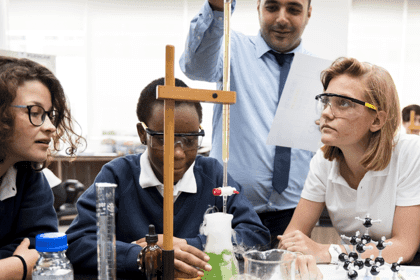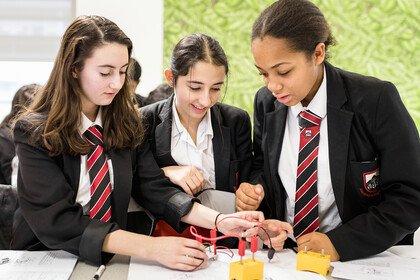
Science Education Tracker 2019
More than 6,400 young people across England have taken part in our survey into attitudes towards and experiences of science education and careers.
This is the second wave of the survey, which was first run in 2016.
What’s inside
- young people’s views on science education and careers, based on a survey of more than 6,400 students in years 7-13 (aged 11-18) in schools and colleges across England.
Who this is for
- policy makers
- funders
- teachers
- informal science educators
- researchers
Key findings
Many young people don’t see science as relevant to their everyday lives or their future plans
- Only 41% of students in years 7-13 consider an understanding of science to be important to their everyday lives.
- Since 2016, the proportion of students in years 10-13 who say that science is important to their everyday lives has declined from 48% to 40%.
- The proportion of students who are very or fairly interested in science lessons declines over time – from 83% in year 7 to 73% in year 8 and 68% in year 9.
Practical work is key to motivating young people in science, but there are fewer opportunities for hands-on work in later school years
- 55% of students in years 7-9 and 32% of students in years 10-13 say that practical work is the most motivating aspect of science lessons.
- 63% of students in year 7 report doing hands-on practical work at least once a fortnight. However this proportion falls steeply by school year – only 33% report a similar frequency of practical work in year 11.
- 62% of students in years 7-11 want to do more practical work. This attitude is more common among young people who are less engaged in science.
- 27% of students in years 10-13 want to do STEM-related work experience but are unable to do so.
Gender gaps are a major issue – both in the types of science subjects that young people do and don’t choose to study, and how they perceive their ability
- Male students in years 11-13 are more likely to choose maths, physics and computer science subjects, while female students are more likely to choose biology, arts and social science subjects. Chemistry is more balanced by gender.
- In years 10-11, 53% of female students feel anxious about science tests or exams most times compared with 28% of male students.
- Female students in years 10-13 are less likely than male students to rate themselves as good at maths (63% males, 51% females), physics (46% males, 28% females) and chemistry (42% males, 34% females).
Students from disadvantaged backgrounds are interested in science, but have fewer opportunities to engage with it – both inside and outside of school
- Students from disadvantaged backgrounds are less likely to have family science connections, for example people they know in science-related jobs or parents who are interested in science. 29% of students from the least deprived areas have many family science connections, compared to 16% of students from the most deprived areas.
- 42% of students in years 7-13 with no family science connections are interested in a STEM career, compared to 68% of students with many family science connections.
- 65% of students in year 7-13 with many family science connections have visited science-related museums or attractions in the past year, compared to 40% of students with no family science connections.
"Gender gaps and socio-economic inequality continue to be major issues influencing young people’s choices, self-perception and opportunities in science. Families and their connections in particular emerge as major brokers of progression and future opportunities. To make STEM access and opportunities equitable for all young people we must work more holistically, taking account of all the factors that support and prevent young people’s engagement."
Charts
Click images to open gallery
Downloads
Share on social media
You can share any resources on this page. Use the hashtag #SciEd.
Pressing play on the video above will set a third-party cookie. Please read our cookie policy for more information.
Why do only 41% of young people consider an understanding of science as important to their everyday life? @WTeducation asked over 6,400 students across England for their opinion on #SciEd #STEM wellcome.org/set2019


